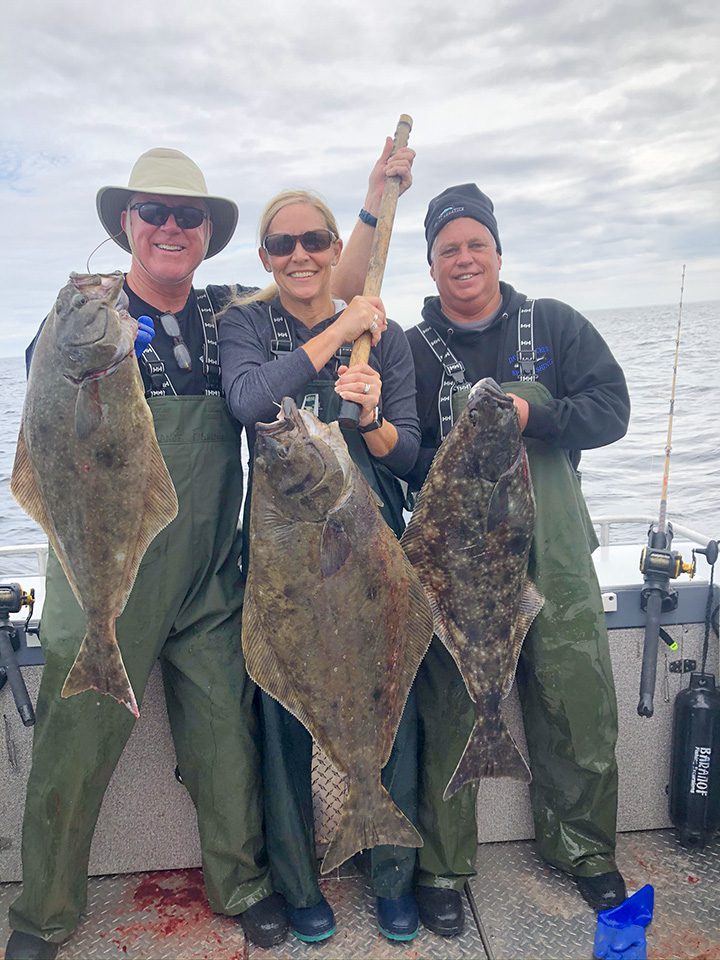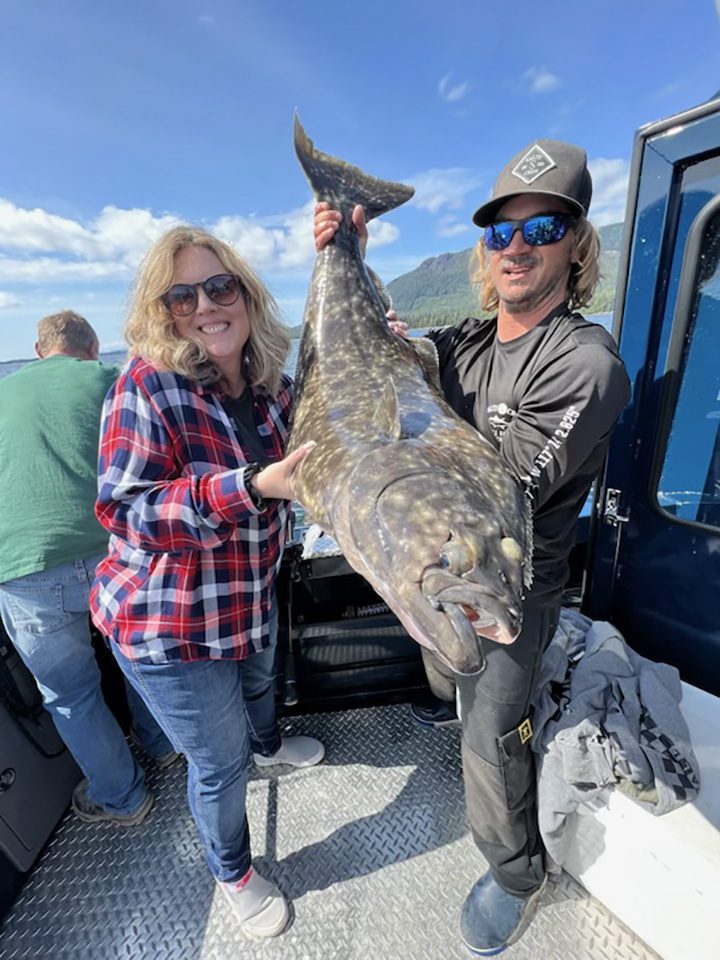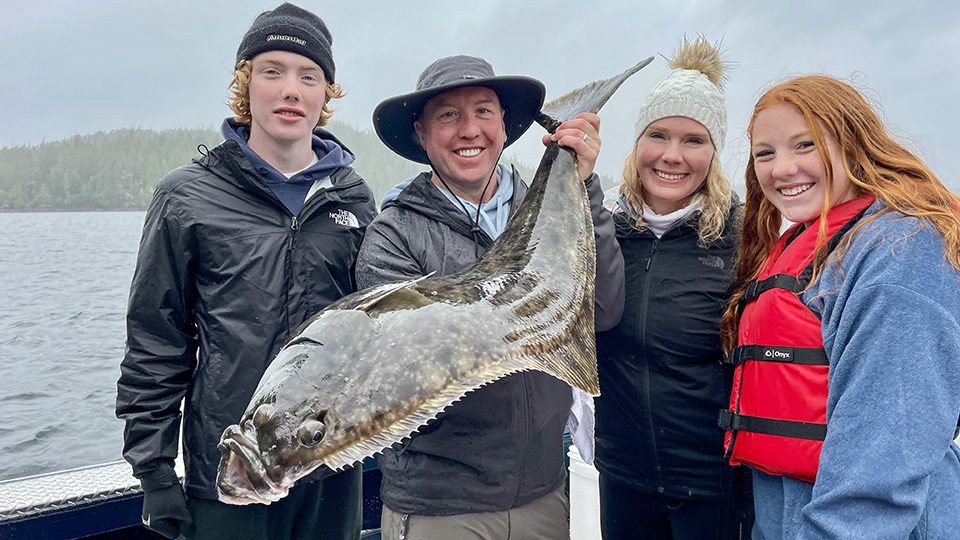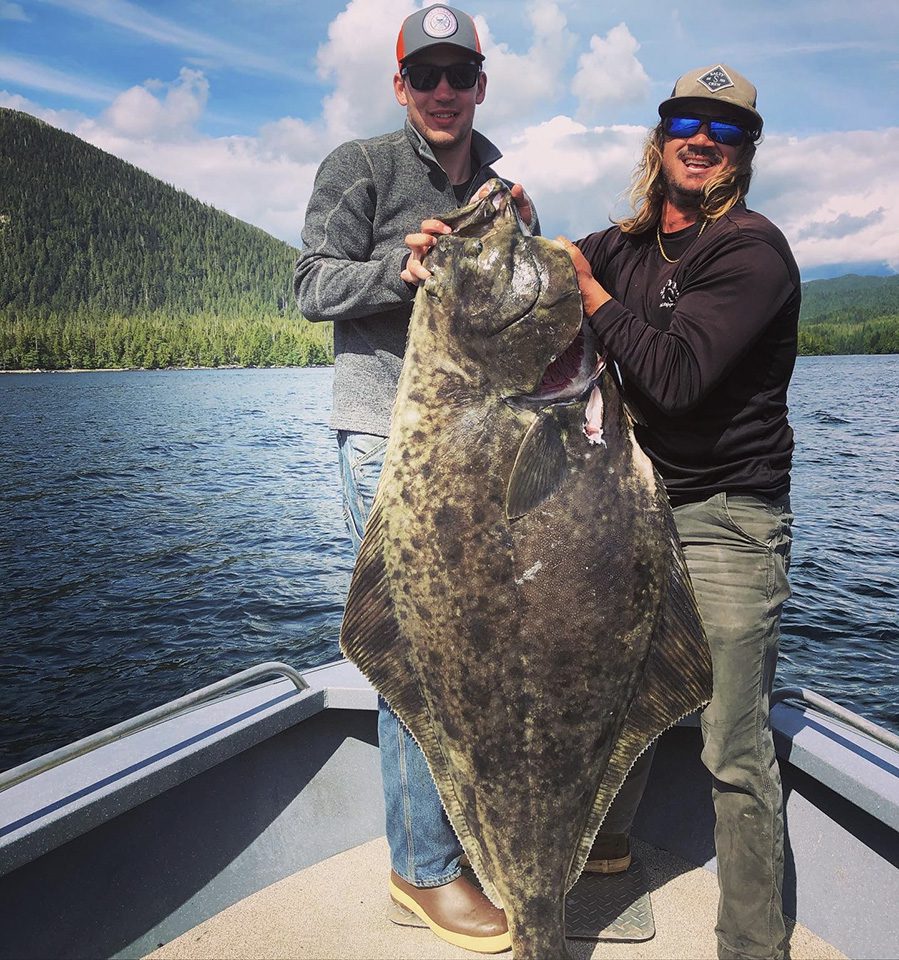By Capt. Lukas Brickweg
Iconic images of massive Alaska halibut dwell in the minds of avid anglers who’ve seen the photos. Halibut are one of those globally pursued bucket-list trophy species.
So, what’s the big deal about them?
First off, halibut are rightfully renowned for their exceptional fighting power and quality as a food fish. They also grow huge. You’ve likely seen photos of anglers lying beside giant “barn door” halibut. In Southern fisheries of the United States, big flounder are called “doormats” because they’re roughly the size and shape of a doormat. Well, halibut are like flounder in their body shape, except halibut might actually be as large as a barn door. Barn door halibut might weigh 400 pounds and grow to 8 feet in length. The IGFA all-tackle world record was caught from Dutch Harbor, Alaska in 1996. It weighed 459 pounds. Anglers love giant fish; that’s why halibut are on the bucket list, and even people who don’t know or care what these fish look like could absolutely tell you that a firm, white halibut steak is an amazing culinary treat.
Fishing for halibut requires knowledge of the sea floor and an understanding of the habitat halibut prefer. During the summer fishing season in Alaska, halibut move into “shallow” waters from 50 feet to as deep as 500 or 600 feet. The sweet spot for us is in the 200- to 400-foot range. Pacific halibut concentrate on sandy flats and underwater seamounts, where food is concentrated by the large tidal flows. The halibut diet consists of basically everything including herring, salmon and cod, as well as crustaceans such as crab and shrimp.
At these depths, we target halibut using a variety of deep-sea equipment. Basically, it’s heavy-tackle bottom-fishing reels and rods rigged with braided line designed to haul big, strong fish up from deep, cold water. It’s definitely a test of strength.
We might entice these bottom dwellers with a glow-in-the-dark artificial squid baited with chunks of herring, salmon or cod. In addition, halibut fishing with metal jigs and grubs is very productive. Pacific halibut are a scent-driven fish. In the deep dark waters off the Alaskan coastline, a lack of light makes sight less important. A keen sense of smell is the primary tool halibut use to feed and thrive in these conditions.
Fishing for halibut out of Ketchikan, Alaska requires a 30-minute to 1-hour boat ride to reach the richest grounds. In these waters, you can expect to catch halibut, pacific cod, rockfish and sharks. Although there are monster halibut lurking below, we usually catch them in the 20- to 60-pound range. These are the best sized halibut in terms of eating quality, and even the smaller ones provide a deep-sea wrestling match anglers are unlikely to forget.
Enjoy catching your own fresh-caught halibut on an Alaskan fishing adventure. Give us a call, and we’ll help you plan it.
Contact Ketchikan’s Finest Fishing Charters at (907) 617-4717 or e-mail kethchikanfishingtrips@gmail.com.






